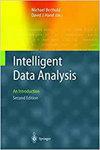一种基于联邦迁移学习和支持向量机的高效入侵检测方法
IF 0.8
4区 计算机科学
Q4 COMPUTER SCIENCE, ARTIFICIAL INTELLIGENCE
引用次数: 0
摘要
近几十年来,网络安全对组织和个人来说变得越来越重要,入侵检测系统在保护网络安全方面发挥着关键作用。为了提高入侵检测的效果,不同的机器学习技术得到了广泛的应用,并取得了令人兴奋的成果。然而,这些方法获得可靠结果的前提是有足够的可用且标记良好的训练数据,训练数据和测试数据来自同一分布。在现实生活中,单个组织生成的有限标签数据不足以训练出可靠的学习模型,不同组织收集的数据分布也很难相同。此外,各种组织通过数据孤岛来保护他们的隐私和数据安全。为此,本文提出了一种基于迁移学习和隐私保护支持向量机(FETLSVMP)的高效入侵检测方法。FETLSVMP通过联邦学习对分布在各个组织中的数据进行聚合,然后利用迁移学习和支持向量机为每个组织构建个性化模型。具体来说,FETLSVMP首先建立了迁移支持向量机模型,解决了不同组织间数据分布差异的问题;然后,在联邦学习的机制下,利用该模型在不共享各组织训练数据的情况下进行学习,保护数据隐私;最后,给出了保护数据隐私的入侵检测模型。在NSL-KDD、KDD CUP99和ISCX2012上进行了实验,实验结果验证了所提方法能够取得较好的检测效果和鲁棒性,特别是对于小样本和新兴入侵行为,具有保护数据隐私的能力。本文章由计算机程序翻译,如有差异,请以英文原文为准。
An efficient intrusion detection method using federated transfer learning and support vector machine with privacy-preserving
In recent decades, network security for organizations and individuals has become more and more important, and intrusion detection systems play a key role in protecting network security. To improve intrusion detection effect, different machine learning techniques have been widely applied and achieved exciting results. However, the premise that these methods achieve reliable results is that there are enough available and well-labeled training data, training and test data being from the same distribution. In real life, the limited label data generated by a single organization is not enough to train a reliable learning model, and the distribution of data collected by different organizations is difficult to be the same. In addition, various organizations protect their privacy and data security through data islands. Therefore, this paper proposes an efficient intrusion detection method using transfer learning and support vector machine with privacy-preserving (FETLSVMP). FETLSVMP performs aggregation of data distributed in various organizations through federated learning, then utilizes transfer learning and support vector machines build personalized models for each organization. Specifically, FETLSVMP first builds a transfer support vector machine model to solve the problem of data distribution differences among various organizations; then, under the mechanism of federated learning, the model is used for learning without sharing training data on each organization to protect data privacy; finally, the intrusion detection model is obtained with protecting the privacy of data. Experiments are carried out on NSL-KDD, KDD CUP99 and ISCX2012, the experimental results verify that the proposed method can achieve better results of detection and robust performance, especially for small samples and emerging intrusion behaviors, and have the ability to protect data privacy.
求助全文
通过发布文献求助,成功后即可免费获取论文全文。
去求助
来源期刊

Intelligent Data Analysis
工程技术-计算机:人工智能
CiteScore
2.20
自引率
5.90%
发文量
85
审稿时长
3.3 months
期刊介绍:
Intelligent Data Analysis provides a forum for the examination of issues related to the research and applications of Artificial Intelligence techniques in data analysis across a variety of disciplines. These techniques include (but are not limited to): all areas of data visualization, data pre-processing (fusion, editing, transformation, filtering, sampling), data engineering, database mining techniques, tools and applications, use of domain knowledge in data analysis, big data applications, evolutionary algorithms, machine learning, neural nets, fuzzy logic, statistical pattern recognition, knowledge filtering, and post-processing. In particular, papers are preferred that discuss development of new AI related data analysis architectures, methodologies, and techniques and their applications to various domains.
 求助内容:
求助内容: 应助结果提醒方式:
应助结果提醒方式:


